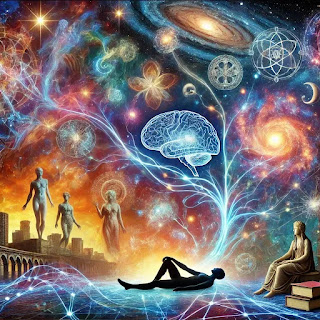Mob Justice
Mob justice, also known as vigilante justice or "street justice," occurs when a group of people take the law into their own hands, bypassing legal authorities and formal justice systems. Typically, mob justice arises from a sense of frustration, perceived injustice, or lack of trust in the legal system. The crowd believes that the person they are targeting has committed a crime and deserves punishment, but instead of waiting for formal legal proceedings, they act immediately, often violently.
Key Aspects of Mob Justice
1. Triggering Event: Mob justice is often sparked by accusations of crimes like theft, sexual assault, murder, or corruption. Sometimes, rumors or misunderstandings can fuel mob actions without substantial proof.
2. Absence of Legal Due Process: The hallmark of mob justice is that there is no formal investigation, trial, or opportunity for the accused to defend themselves. The group acts as judge, jury, and executioner.
3. Collective Action: In mob justice, a group of people, often from the local community, act together. The collective behavior of a crowd can intensify emotions and escalate the situation, leading to more extreme outcomes than if individuals acted alone.
4. Violence and Brutality: Mob justice often results in violence, including beatings, lynching, or burning. The punishments meted out are frequently disproportionate to the alleged crime, and innocent individuals may suffer due to mistaken identity or false accusations.
5. Lack of Accountability: One of the challenges of mob justice is the difficulty in holding individual participants accountable. In a large, chaotic crowd, it is hard to determine who played what role, leading to impunity for the perpetrators.
6. Social and Cultural Drivers:
Distrust in Law Enforcement: In many cases, mob justice arises because the local population believes that the police or legal authorities are either ineffective, corrupt, or slow to act. They feel that taking matters into their own hands is the only way to secure justice.
Socioeconomic Factors: Poverty, inequality, and lack of education can also fuel mob justice, as people may lack access to legal resources or awareness of the rule of law.
Cultural Norms: In some communities, vigilante actions may be seen as an acceptable or traditional way to resolve disputes or address crime.
Consequences of Mob Justice
1. Injustice: Because mob justice is based on accusations without formal evidence, innocent people can be wrongly targeted, leading to wrongful deaths or injuries.
2. Escalation of Violence: Mob actions often spiral into further violence, sometimes sparking retaliation, community conflict, or mass unrest.
3. Undermining Rule of Law: When people lose faith in the formal justice system, mob justice becomes more common, creating a cycle where the rule of law is further weakened, leading to more vigilante actions.
4. Erosion of Social Trust: Mob justice undermines social trust, as people may fear being falsely accused or targeted by vigilante groups.
Examples of Mob Justice
1. Public Lynching: In many parts of the world, particularly in regions with weak law enforcement, mobs have lynched individuals suspected of serious crimes. In countries like India and certain parts of Africa, lynchings related to cattle theft, sexual assault accusations, or witchcraft allegations are tragically common.
2. Street Beatings: In some cities, petty thieves or pickpockets are often beaten by crowds rather than handed over to the police.
3. Community Vigilantism: In some rural areas where police presence is minimal, entire communities may come together to punish criminals or individuals seen as threats, such as suspected sorcerers or traitors.
Legal Response to Mob Justice
Governments and human rights organizations condemn mob justice as it violates human rights and undermines the principles of justice. Legal systems emphasize the need for proper investigation, trial, and sentencing by authorized institutions to ensure fairness and accountability.
Preventing Mob Justice
1. Strengthening the Rule of Law: By improving the efficiency, fairness, and accessibility of legal systems, the need for vigilante justice can be reduced.
2. Education and Awareness: Raising awareness about the dangers and injustice of mob justice can help communities turn to legal avenues rather than taking matters into their own hands.
3. Improving Law Enforcement: A reliable and trusted police force that responds quickly to crimes and enforces justice fairly can prevent the public from feeling the need to act outside the law.
4.Community Engagement: Encouraging open dialogue between community members, law enforcement, and legal representatives can foster trust and cooperation, reducing the likelihood of mob actions.




Comments